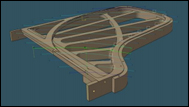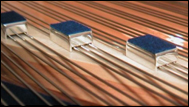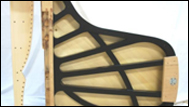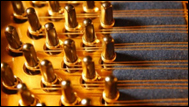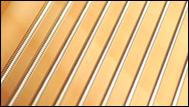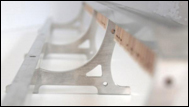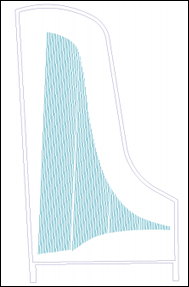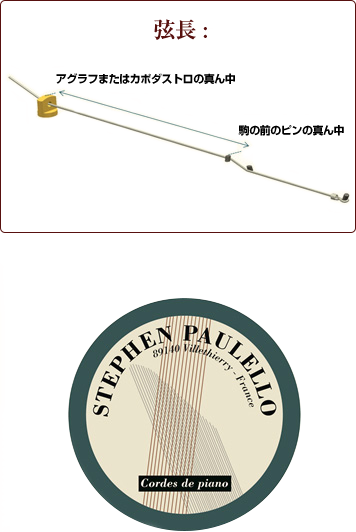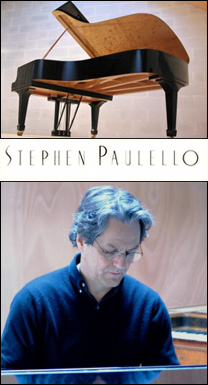

ミュージックワイヤーを作るにあたっては、素材の太さとそれに伴う許容範囲、完璧な円柱形の実現と研磨作業、巻線の規則性、腐食に対する強度、圧迫に対する強度と順応性などを考えなければなりません。
さらに高品質のワイヤーを作るにあたっては、それらに加えて、優れた均衡を保つスペクトルを研究し、内部の振動減衰要因を改善し、張力を加えた後の安定の速度を上げることが必要になります。
弦の製造技術、製造の迅速さ、数多くの設備の選択、改良の積み重ね、質の高い研磨作業などを入念に追求した結果、ステファン・ポレロはすべての要求を満たした上にさらに美しさまでをも兼ね合わせ、傑出した音の持続力、力学的に並はずれて規則性の高い出来栄えのミュージックワイヤーを実現しました。
弦の品質と音色については、昔から音楽家や製作家、技術者の間で多くの議論が交わされてきました。
しかしここ10年ほどは、弦の選択肢がなかったために、ピアノ製作の業界でピアノ弦は特に研究対象にはなりませんでした。
二通りの仕上げ形態をもつ5種類の鋼鉄弦を提供することにより、ステファン・ポレロは、 « モダン » 楽器の製作や修理に、古いピアノの修復で行われているような弦の選択肢を提供する必要性を提起しながら、議論を投げかけます。
Stephen Paulello
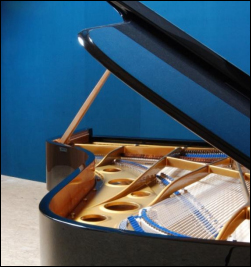
Stephen Paulello is a very sensitive and talented concert pianist.
He won international prizes then led an artistic career, becoming interested in the construction of the instrument he played in studying all its various aspects: metallurgical, acoustical, strength of materials …
To begin with he designed two models of upright pianos, then completed his first concert grand piano in 1990. This prototype is universally acclaimed as an example of a precocious but perfect mastery of piano construction.
But Stephen Paulello wants to go further. The piano in its traditional form does not satisfy his demands as a pianist. He dreams of more complex and expressive sonorities which guide his inventive intuitions and motivate him to question established dogmas.
For more than 20 years now, Stephen Paulello has studied systematically all the components of the piano, challenged generally accepted ideas and made remarkable proposals. His aim is not to impose a reputedly perfect piano, nor to replace a neutral and polyvalent standard by another; his desire is to convince musicians that they should explore the
potential of different instruments, which respond to their personal imagination and carry them to the height of musical expressiveness.
Stephen Paulello’s pianos are constructed to order in his workshop-laboratory in France, between the Champagne and Bourgogne regions.
A NEW ERAFOR THE PIANO,
A WIDER HIRIZON FOR COMPOSERS AND PERFORMERS
For more than a century, technical and acoustical choices by manufacturers have converged towards a unique conception of the piano.
In the years 1880, the instrument was almost perfected; complaints from pianists and composers became less insistent and growing enthusiasm for the piano led to increased demand. It was necessary to put a brake on the exuberant inventiveness of the XIXth century craftsmen and move on to rational,
industrial production. Piano makers conformed progressively to the technologies of the most enterprising and well-established manufacturers of the era. Inevitably, the sonority of pianos lost its diversity to a common esthetic.
Since then, the trend of standardization has been validated by the explosion of production in Asia, where the base model is conscientiously reproduced.
It is therefore normal to think that all pianos are alike because the instrument has reached its final form and is a perfectly finished product.
Stephen Paulello does not agree with this point of view. The piano represents for him a vast subject for reflection and a whole world still to be explored. He is working in two directions:
1 – Solving esthetic and musical problems
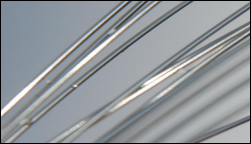
- Search for contrasting qualities such as light and shade, strength and fragility, brilliance and halftones, impressionism and expressionism
- Enhance the versatility of the colors in all the nuances
- Avoid saturation, metallic sound and loss of sustain in the fortissimo
- Avoid the systematic loss of tone in the piano nuance
- Remedy the almost universal mediocrity in the treble, the vulgarity and lack of precision in the bass,
the confusion at the break, the frequently poor quality in the medium
2 – Solving technical and practical problems
- Remedy the instability of regulations and tuning
- Facilitate the technicians’ work in making it more logical and rational
- Find a solution to the mechanical and acoustical sensitivity to hygrometric variations
- Eradicate string noises
- Eliminate wild strings
- Protect the strings from corrosion
- Avoid the loss of crown of the soundboard
- Make transport easier
When searching for musicality and charm, there is a great temptation to look to the past. Stephen Paulello has examined pianos of days gone by, with a preference for those made at the turn of 19th and 20th centuries. In dismantling, restoring, modifying them, he revives the spirit of inventiveness which created them. Certain concepts of construction widely applied at the time, such as parallelism of the strings or the use of barless frames, were in his opinion abandoned before their full capacity was understood… Rather than contenting himself with a cult of the past, Stephen Paulello takes up the history of piano-making there where it came to a halt.
Many of the ancestral procedures still used today are obsolete. New materials, combined with new technologies, on condition that they are correctly used without harming the sonority, can contribute to the piano’s reliability. However, that does not mean that it is necessary to move towards numerical instruments. For the composer, the synthesizer can be a remarkable tool for creating sounds, but when used to replace the piano it remains, despite all efforts, a mediocre substitute. Nevertheless, it represents a challenge to the original instrument which is therefore forced to correct its technical weaknesses while refining the natural acoustic so that the artistic and emotional scope remains incomparably superior.
It is in this spirit that Stephen Paulello seeks to give a definite and refined character to his instruments with an enveloping radiance conducive to the musical journey. The pianist has at his disposal an infinite palette of colors and feels that the instrument understands the slightest figment of his imagination. Such a piano is not a tool but a source of inspiration. Stephen Paulello also makes a gesture towards composers and improvisers in proposing an extended keyboard in the bass and treble and in making it
much easier to play directly on the strings: parallel strings, elimination of frame bars, nickel-plated strings.
SEMI GRAND AND CONCERT GRAND PIANOS:
ORIGINAL AND DARING CONCEPTIONS
Avant-garde in research and inventiveness, rare in their level of accomplishment, prodigious in their musical intensity, Stephen Paulello pianos extol music and musicians.
“Exceptional instruments!” Aldo Ciccolini


